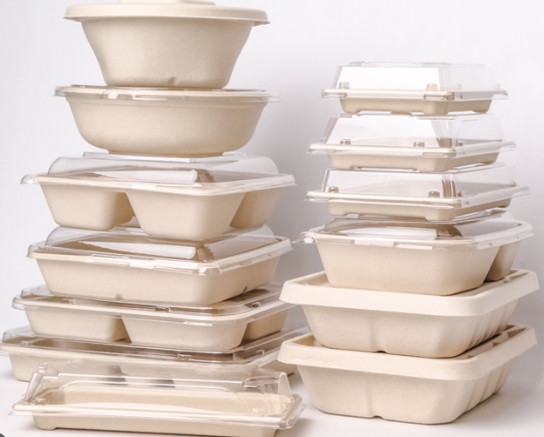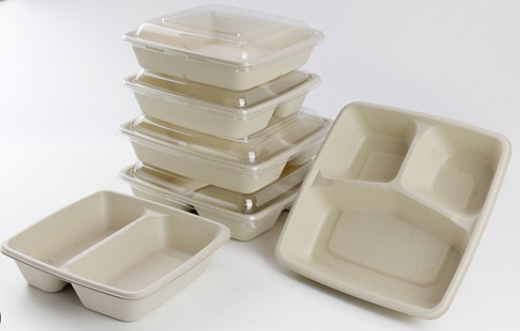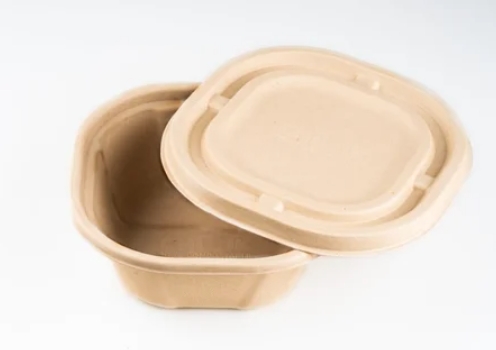
Content Menu
● Introduction to Packaging Choices
● What Is a Container Box?
>> Types of Container Boxes
>> Applications
>> Benefits and Drawbacks
● What Is a Corrugated Box?
>> Types of Corrugated Boxes
>> Applications
>> Benefits and Drawbacks
● Key Factors to Consider in Packaging Selection
>> Product Weight and Dimensions
>> Protection Requirements
>> Branding and Visual Impact
>> Cost and Budget Strategy
>> Environmental Considerations
● Container Box vs Corrugated Box: Head-to-Head Comparison
>> Strength and Durability
>> Cost-Effectiveness
>> Environmental Sustainability
>> Usage Flexibility
● Use Cases and Industry Examples
● Common Misconceptions
● How to Decide Which Packaging Is Best for Your Product?
● Conclusion
● FAQ
>> 1. What is the main difference between container and corrugated boxes?
>> 2. Are corrugated boxes strong enough for international shipping?
>> 3. Which packaging is better for branding purposes?
>> 4. Can container boxes be recycled?
>> 5. Which box type is more environmentally friendly?
Packaging is more than just a container for your products—it is a critical element in logistics, branding, customer satisfaction, and environmental responsibility. In today's market, two popular packaging solutions are container boxes and corrugated boxes. Both come with their unique sets of strengths and limitations. But which packaging is better for your specific needs?
Whether you're an e-commerce seller, a manufacturer, or a retailer, choosing the right packaging can affect your bottom line, product safety, and customer experience. This detailed guide will help you navigate the key differences between container and corrugated boxes to determine the best option for your business.

Introduction to Packaging Choices
The modern packaging landscape offers countless options, but two of the most frequently used are container boxes and corrugated boxes. While they're often used interchangeably in casual conversations, understanding what separates the two can help optimize your supply chain and enhance your customer journey from delivery to unboxing.
What Is a Container Box?
Types of Container Boxes
Container boxes are rigid packaging options typically made from hard-wearing materials like plastic, wood, or metal. They are designed to be strong, stackable, and reusable, making them ideal for transporting heavy items or goods that require extra protection.
Common types include:
- Plastic container boxes: Lightweight, moisture-resistant, and reusable.
- Wooden crates: Traditional, robust containers often used in industrial and agricultural sectors.
- Metal containers: Known for durability and strength; used in transporting machinery and hazardous materials.
- Heavy-duty fiberboard containers: A hybrid option made with layered paper materials and used for specific industrial needs.
Applications
Container boxes are used in a variety of commercial and industrial sectors. Some typical applications include:
- Transporting machinery parts and automotive components
- Shipping fragile medical or laboratory instruments
- Warehousing high-value items
- Overseas shipping where customs, handling, and climate changes require added protection
Benefits and Drawbacks
Benefits:
- High durability: Excellent for heavy-duty materials and long-distance transport.
- Good reusability: Ideal for closed-loop logistics or returnable packaging systems.
- Superior protection: Shields products from damage, moisture, impact, and sometimes even temperature shifts.
Drawbacks:
- Higher cost: Initial purchase and maintenance costs are significantly more than paper-based options.
- Heavier: Increases overall shipping weight and costs.
- Lower branding flexibility: Limited printing and customization capability compared to paper-based options.
What Is a Corrugated Box?
Types of Corrugated Boxes
Corrugated boxes, also known as cardboard boxes, are made from lightweight yet sturdy materials. The typical structure includes a fluted middle layer sandwiched between two flat linerboards. This design offers strength without adding much weight.
Common types include:
- Single-wall corrugated boxes: Ideal for lightweight to moderately heavy items.
- Double-wall corrugated boxes: Increased strength for heavier goods.
- Triple-wall boxes: Built for industrial-strength protection while still being lighter than container boxes.
Applications
Corrugated boxes are the go-to choice across industries for delivering consumer goods and products. Popular applications include:
- E-commerce shipping for apparel, gadgets, and household items
- Food packaging and takeaway delivery
- Retail-ready packaging for display purposes
- Shipping and storing lightweight to medium-weight industrial parts
Benefits and Drawbacks
Benefits:
- Cost-effective: Lower material and manufacturing costs make them ideal for bulk use.
- Customizable: Ideal for branding with printed graphics and promotional designs.
- Eco-friendly: Most are biodegradable and recyclable.
- Lightweight: Makes storage and transportation more manageable and affordable.
Drawbacks:
- Lower strength: Not suitable for extremely heavy or fragile items without additional protection.
- Limited reusability: Most are designed for single use.
- Water sensitivity: Standard units are prone to damage from moisture unless specially treated.

Key Factors to Consider in Packaging Selection
Product Weight and Dimensions
The size and weight of your product greatly influence the type of packaging you should choose. Container boxes are better suited for large and heavy items, while corrugated boxes are perfect for products that are small to medium in size and relatively light.
Protection Requirements
If the product is fragile or has high-value components that must be well-protected, container boxes are the safer choice. For general shipping and items that are not easily damaged, corrugated boxes generally provide sufficient protection.
Branding and Visual Impact
For businesses heavily invested in branding, corrugated boxes offer more opportunities for customization, from vibrant full-color printing to innovative die-cut designs. Container boxes have limited aesthetic flexibility due to their rigid structure and industrial use.
Cost and Budget Strategy
Corrugated boxes are typically much cheaper per unit and more suitable for volume packaging. Container boxes are more expensive but may save money in long-term reusable supply chains.
Environmental Considerations
If environmental sustainability is a concern, corrugated boxes are better aligned with green practices due to their recyclability and biodegradable nature. However, container boxes made from recyclable materials or reused in closed-loop supply systems can also serve sustainability goals.
Container Box vs Corrugated Box: Head-to-Head Comparison
| Criteria | Container Box | Corrugated Box |
| Durability | High | Moderate to High |
| Weight | Heavy | Light to Moderate |
| Cost per Unit | High | Low to Moderate |
| Suitable For | Heavy, high-value goods | Lightweight, mass-market goods |
| Print & Branding | Limited | Excellent |
| Environmental Impact | Reusable but less recyclable | Highly recyclable and compostable |
| Handling & Transport | Less convenient | Easy to handle and ship |
Strength and Durability
Container boxes outperform in scenarios where shock protection and durability are critical. Corrugated boxes, when reinforced, are robust for most mid-range weight items but may fall short under excessive load or moist condition exposure if untreated.
Cost-Effectiveness
Corrugated boxes come out ahead in cost-sensitive environments where large volumes of products are being packaged. Container boxes gain cost advantage in settings where they can be reused many times.
Environmental Sustainability
Corrugated boxes are generally biodegradable and made from renewable resources. However, plastic or metal container boxes can reduce waste long-term if reused hundreds of times.
Usage Flexibility
Corrugated boxes are highly flexible in terms of size, shape, and design. Container boxes require special tools or machinery to customize, making them less agile in adapting to new packaging requirements.
Use Cases and Industry Examples
- Electronics and Appliances: Corrugated boxes with internal padding are used for smaller electronics, while container boxes protect larger or more fragile components like server racks.
- E-commerce Retailers: Corrugated boxes dominate due to lightweight shipping, branding potential, and low costs.
- Automotive Manufacturers: Often favor wooden or metal container boxes to ship large machine parts.
- Grocery and Food Delivery: Corrugated boxes with food-safe lining handle everyday items. Frozen and perishable products sometimes require reusable plastic containers with insulation.
- Pharmaceutical Companies: Use both, selecting based on temperature control, tamper resistance, and contamination risks.
Common Misconceptions
- “Corrugated boxes lack durability.”
This is not entirely true. Double or triple-wall corrugated options are designed for surprisingly high-strength applications.
- “Container boxes are only for industrial use.”
Although prevalent in industrial sectors, many container box versions work well in logistics automation and hardware shipping for small and mid-sized enterprises.
- “Corrugated boxes can't be reused.”
While not as rugged as container boxes, many corrugated designs are reused in retail stocks and internal logistics.
How to Decide Which Packaging Is Best for Your Product?
- Consider your product weight, dimensions, and value.
- Analyze the end-user experience and branding importance.
- Take into account your logistics infrastructure and costs.
- Factor in environmental regulations and customer expectations.
- Plan strategically for reusability and total lifecycle cost of the packaging.
Conclusion
Choosing between container and corrugated boxes is not a one-size-fits-all decision. It depends on your product type, customers, supply chain, and brand values. While container boxes offer unmatched strength and durability, especially for industrial and high-value uses, corrugated boxes excel in affordability, customization, and sustainability.
For many businesses, a hybrid approach—using container boxes for heavy-duty transport and corrugated packaging for retail or e-commerce—offers the best of both worlds. Ultimately, the best packaging for your product is the one that ensures safe delivery, communicates your brand, and aligns with your operational goals.

FAQ
1. What is the main difference between container and corrugated boxes?
Container boxes are made from rigid materials like plastic or wood and offer high durability and reusability. Corrugated boxes are paper-based, lighter, and more cost-effective, often used for shipping consumer goods.
2. Are corrugated boxes strong enough for international shipping?
Double-wall and triple-wall corrugated boxes are suitable for international shipping of robust or moderately heavy items, provided they are appropriately sealed and cushioned.
3. Which packaging is better for branding purposes?
Corrugated boxes are generally better for branding because they can be easily printed and styled to create an appealing unboxing experience for customers.
4. Can container boxes be recycled?
Some container boxes made from materials like plastic and metal can be recycled, although the process and availability depend on regional recycling infrastructure.
5. Which box type is more environmentally friendly?
Corrugated boxes are often considered more eco-friendly because they are usually made from recycled paper and are biodegradable. Container boxes offer sustainability through extended reuse rather than biodegradability.

















